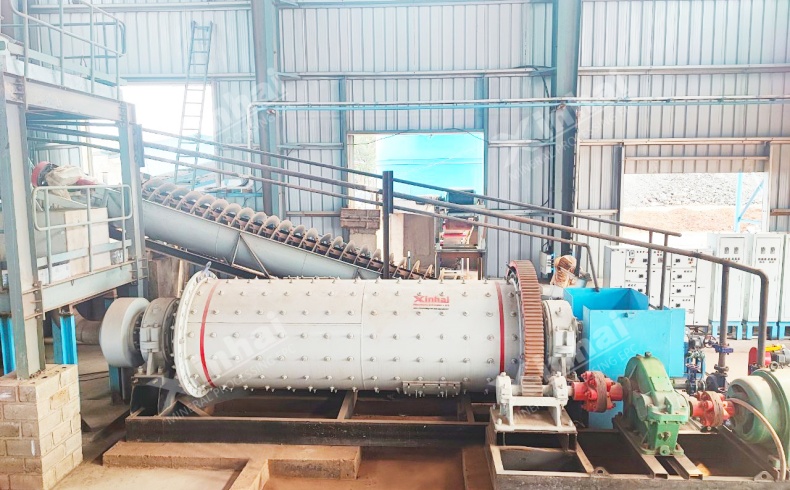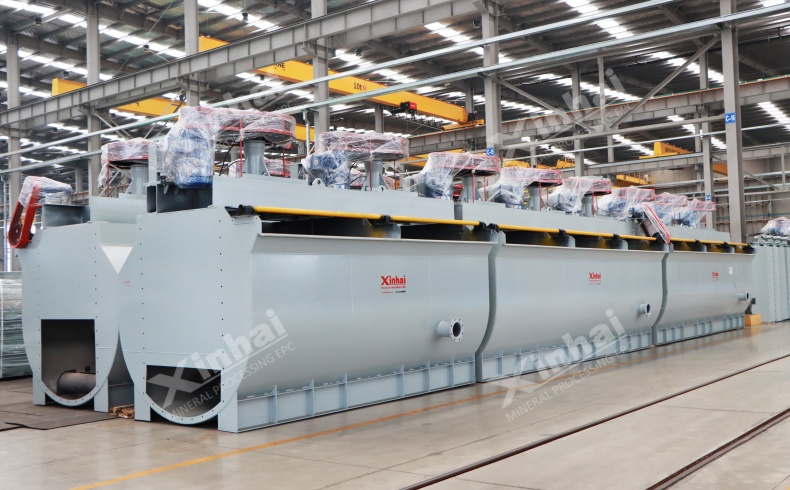If you want to know more information (such as product/process price, etc.), please contact us 24-hour telephone
Chromite ore, the primary source of chromium, is a critical raw material for stainless steel, alloys, and refractory products. However, raw chromite ore typically contains 30–60% Cr₂O₃ alongside impurities like silica, alumina, and iron oxides. Chromite ore beneficiation is the process of upgrading the ore to a higher chromium-to-iron ratio, making it suitable for industrial applications. This article explains the key steps, technologies, and challenges involved in chromite ore beneficiation, ensuring alignment with technical, economic, and environmental best practices.
Chromite ore beneficiation aims to separate chromium-rich minerals from gangue (waste material) through physical or chemical methods. The process enhances the Cr₂O₃ content, reduces impurities, and prepares the ore for downstream metallurgical processes such as smelting or leaching. The choice of beneficiation method depends on the ore’s mineralogy, grain size, and target product specifications.
A. Crushing and Grinding
Chromite ore is first crushed and ground to liberate chromite particles from the gangue matrix.
Primary Crushing: Jaw or gyratory crushers reduce large ore chunks to ~150 mm.
Secondary Crushing: Cone crushers further reduce the size to 10–20 mm.
Grinding: Ball or rod mills pulverize the ore to 0.1–1.0 mm, ensuring optimal liberation of chromite grains.
Goal: Achieve sufficient particle liberation without over-grinding, which wastes energy and creates fine slimes.

B. Gravity Separation
Gravity separation is the most widely used method for chromite ore beneficiation, leveraging differences in density between chromite (4.5–4.8 g/cm³) and lighter gangue minerals (e.g., quartz at 2.6 g/cm³).
a. Spiral Chute
Ore slurry is fed into spiral troughs.
Centrifugal force pushes dense chromite particles toward the inner spiral, while lighter gangue flows outward.
Recovery rates: 85–90%, producing concentrates with 45–50% Cr₂O₃.
b. Shaking Tables
A vibrating table with riffles separates particles using water flow.
Chromite accumulates in grooves, yielding high-grade concentrates.
c. Jigging Machines
Pulsating water stratifies particles; chromite settles at the bottom for collection.
Ideal for coarse-grained ores (1–10 mm).
Case Study: In India’s Sukinda Valley, spiral concentrators upgrade chromite ore from 38% to 48% Cr₂O₃.
C. Magnetic Separation
Chromite is weakly magnetic, allowing separation from non-magnetic gangue (e.g., quartz) or strongly magnetic impurities (e.g., magnetite).
a. Low-Intensity Magnetic Separators (LIMS)
Remove magnetite impurities using 0.1–0.3 Tesla magnetic fields.
b. High-Intensity Magnetic Separators (HIMS)
Separate chromite from paramagnetic silicates at 1.0–2.0 Tesla.
Example: Turkish chromite mines use HIMS to reduce silica content from 8% to 2%.

D. Froth Flotation (Selective Applications)
Though less common, froth flotation can process fine chromite particles (<100 µm).
Process: Chromite is rendered hydrophobic using anionic collectors (e.g., oleic acid) and skimmed from froth.
Challenges: High reagent costs and chromite’s natural hydrophobicity limit its use.
E. Sensor-Based Ore Sorting
Emerging technologies like X-ray transmission (XRT) or laser sensors automate chromite detection.
How It Works: Sensors identify chromite-rich particles, which are ejected via air jets.
Benefits: Reduces energy and water use by discarding waste early in the process.
Chromite ore beneficiation generates tailings (waste slurry) containing residual chromite and gangue. Sustainable practices include:
Tailings Dams: Secure storage to prevent groundwater contamination.
Water Recycling: Closed-loop systems reduce freshwater consumption.
Dust Control: Spray systems minimize airborne particulates.
Regulatory Compliance: Facilities must adhere to guidelines from agencies like the EPA or ISO 14001.
1. Complex Ore Mineralogy: Chromite intergrowths with silicates complicate separation.
2. Fine Particle Processing: Ultrafine particles (<75 µm) are difficult to recover via gravity methods.
3. High Silica Content: Requires multi-stage beneficiation to meet smelting standards.
Innovation: Advanced cyclones and centrifugal concentrators improve fine chromite recovery.
Cost Reduction: Pre-concentration lowers smelting energy costs by 15–20%.
Resource Efficiency: Maximizes chromium recovery from low-grade ores.
Market Demand: High-purity chromite concentrates command premium prices in stainless steel markets.
Conclusion
Chromite ore beneficiation is a vital step in transforming raw chromite into industrial-grade material. By combining gravity separation, magnetic separation, and emerging technologies like sensor-based sorting, producers achieve high recovery rates while minimizing waste and energy use. As demand for chromium grows, optimizing these processes will remain key to sustainable and profitable chromite mining.